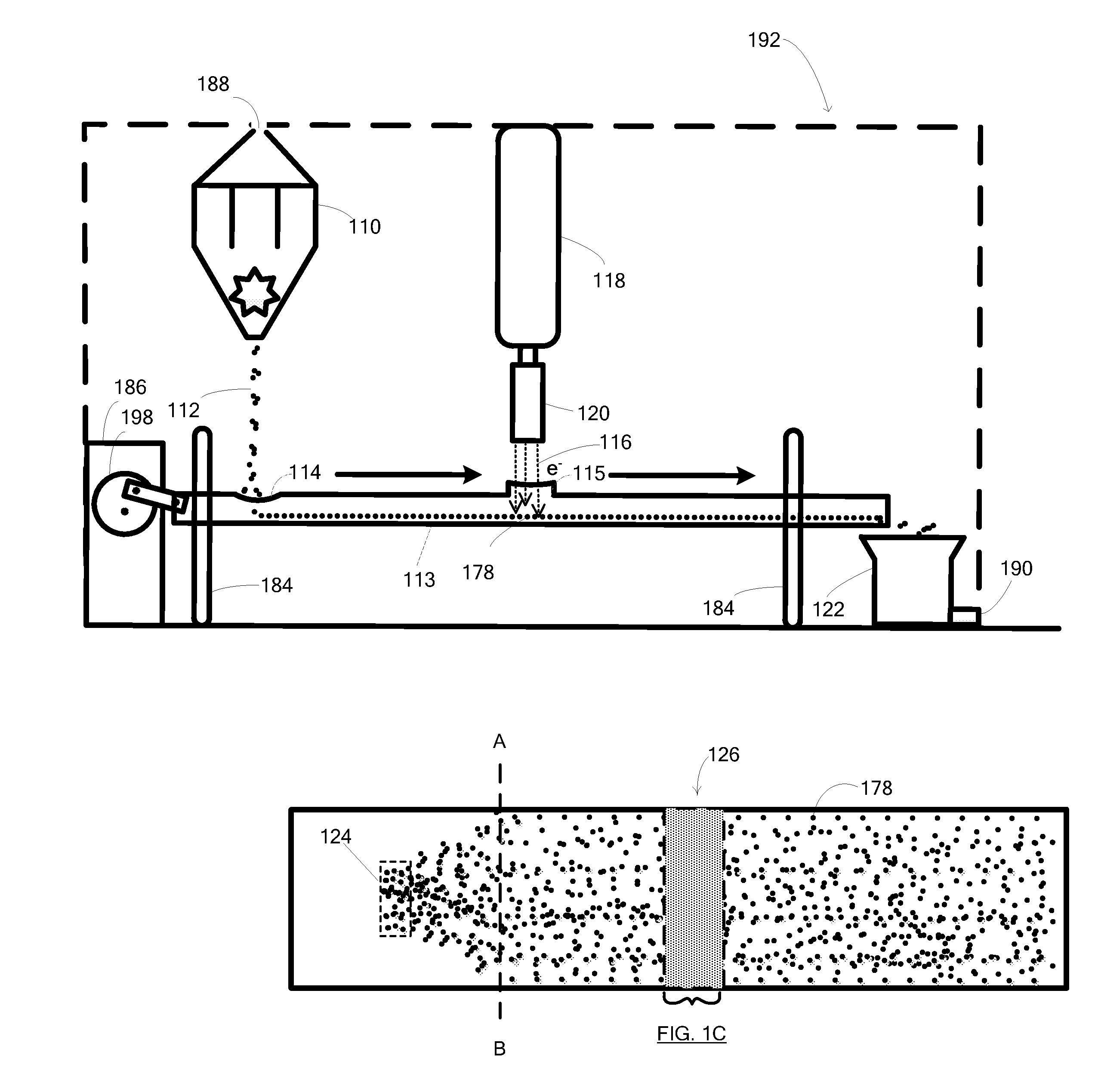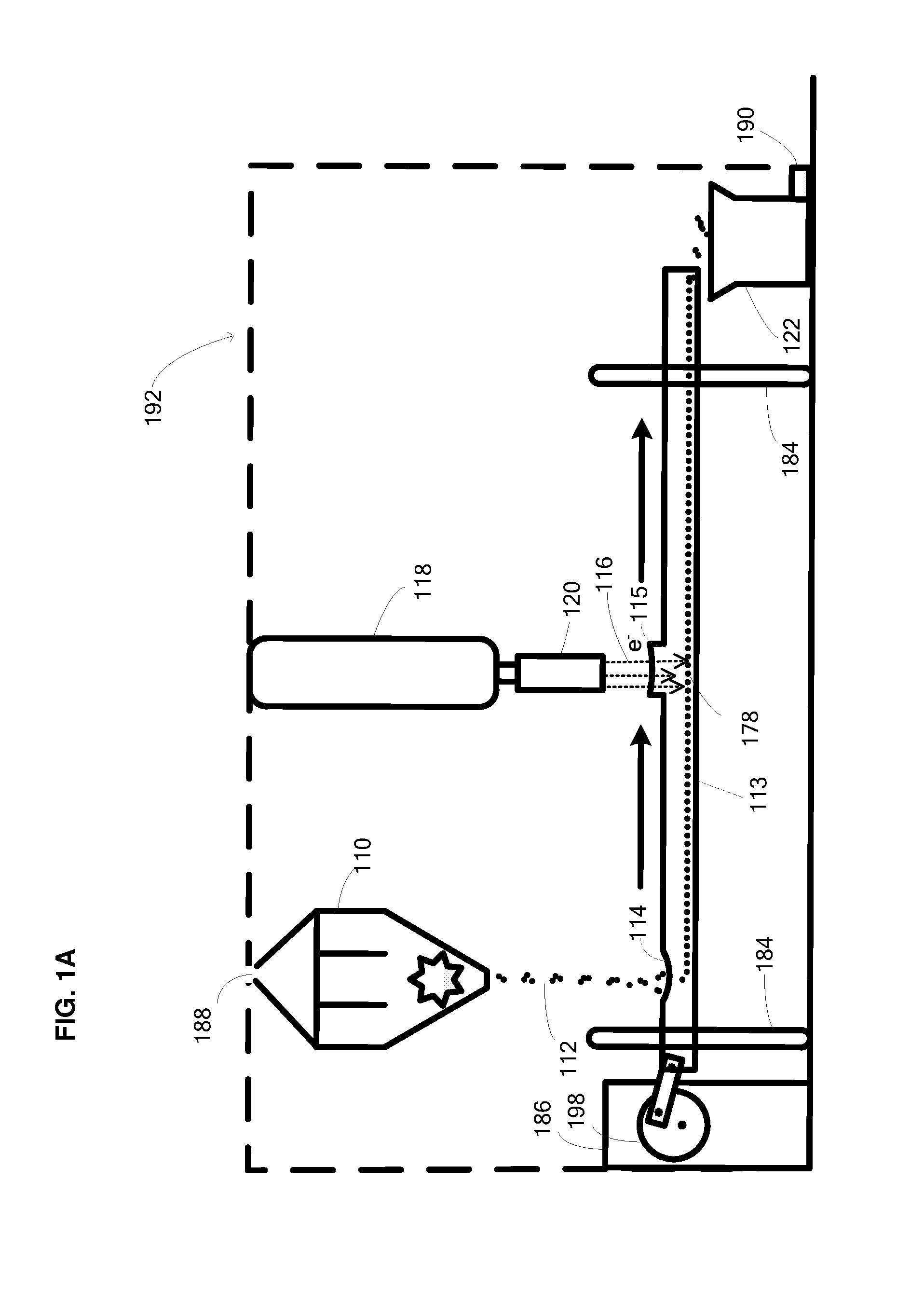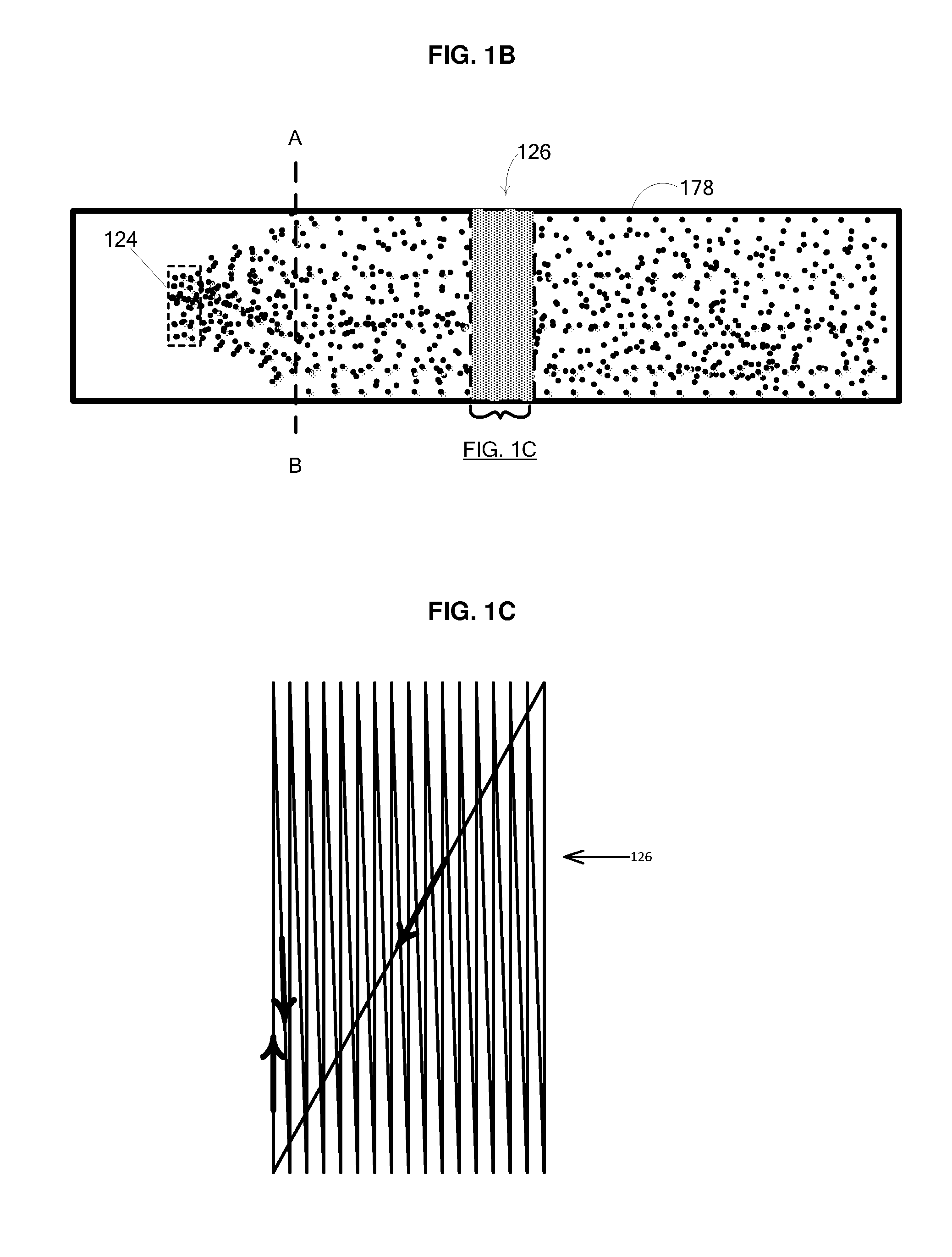Processing biomass
a technology of biomass and irradiation, applied in nuclear engineering, nuclear elements, can solve the problems of high cost, low yield of cellulosic materials when contacted, and difficult access to complex matrix by enzymes and other chemical, biological and biological processes, etc., to achieve uniform irradiation, reduce the burden, and speed up the effect of speed
- Summary
- Abstract
- Description
- Claims
- Application Information
AI Technical Summary
Benefits of technology
Problems solved by technology
Method used
Image
Examples
Embodiment Construction
[0034]Provided herein are methods and apparatus for producing a treated biomass material with a vibratory conveyer. The methods and apparatus provide an advantage because the vibratory conveyor provides an efficient mode of conveying biomass material while it is under an irradiation source.
[0035]An exemplary embodiment is shown in FIGS. 1A-1E. FIG. 1A shows a front side view of a system for irradiation of particulate biomass. A spreader, for example, a distributer such as a CHRISTY SPREADER™110 containing a biomass drops a controlled stream of biomass 112 onto the trough of a covered vibratory conveyor 113 through an opening 114 in the cover of the conveyor. This aids in providing a substantially uniform thickness of the material spread across the conveyer. The covered vibratory conveyor is supported by a support 184 and includes a transverse vibration system including leaf springs. The transverse drive assembly 186 provides horizontal oscillating movement to the trough. The drive m...
PUM
 Login to View More
Login to View More Abstract
Description
Claims
Application Information
 Login to View More
Login to View More - R&D
- Intellectual Property
- Life Sciences
- Materials
- Tech Scout
- Unparalleled Data Quality
- Higher Quality Content
- 60% Fewer Hallucinations
Browse by: Latest US Patents, China's latest patents, Technical Efficacy Thesaurus, Application Domain, Technology Topic, Popular Technical Reports.
© 2025 PatSnap. All rights reserved.Legal|Privacy policy|Modern Slavery Act Transparency Statement|Sitemap|About US| Contact US: help@patsnap.com



